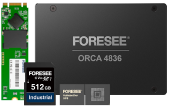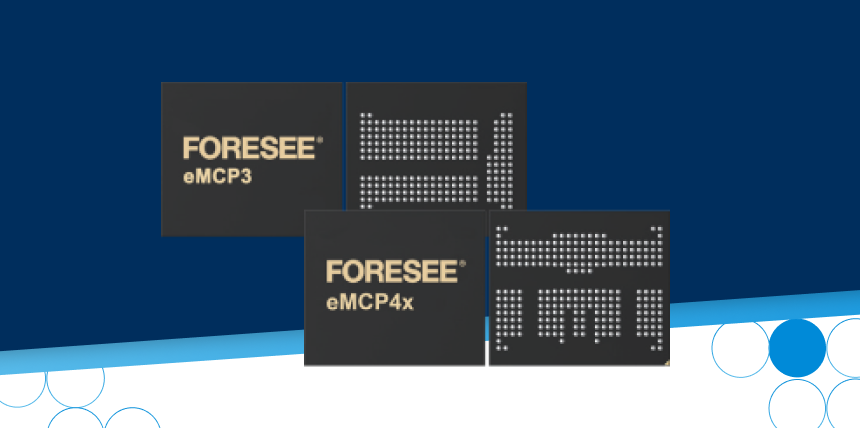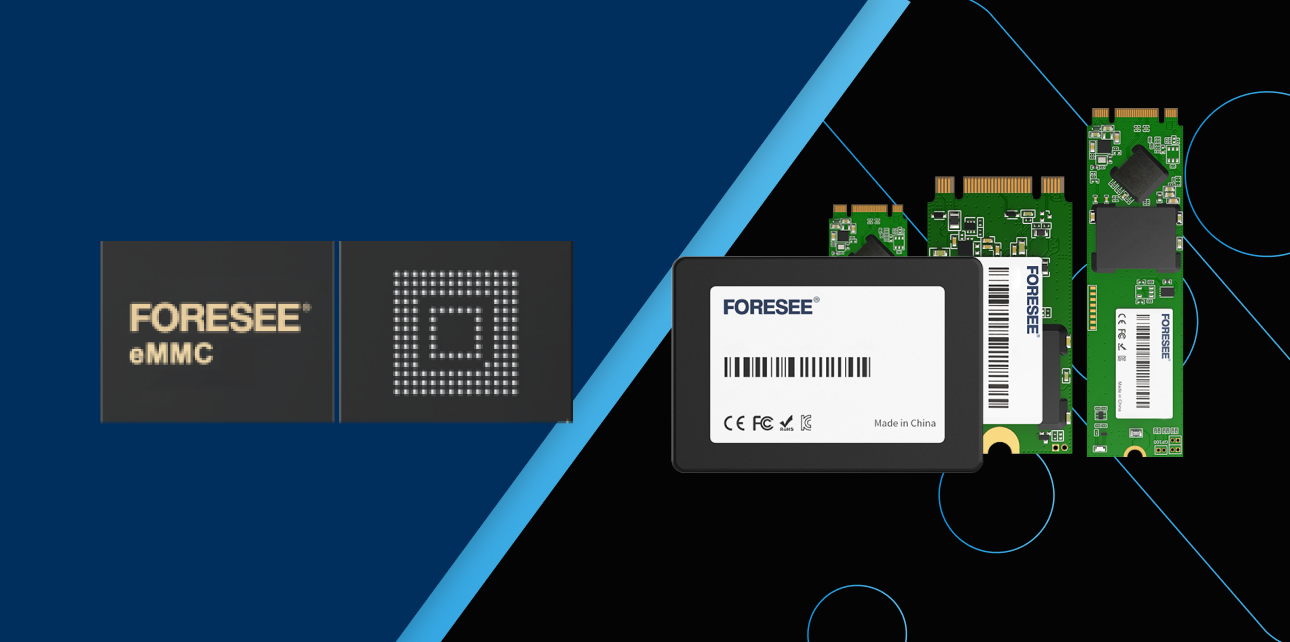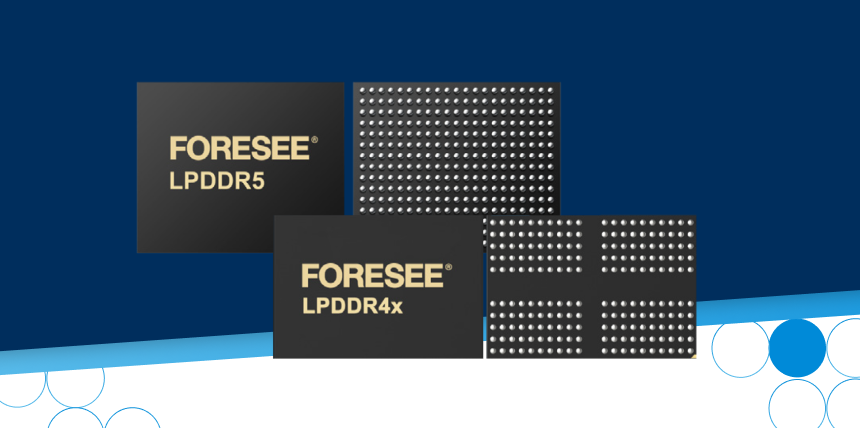In the demanding landscape of modern electronics, device manufacturers face an ongoing challenge: delivering enhanced performance while minimizing form factor. Embedded Multi-Chip Package (eMCP) technology emerges as a sophisticated embedded storage solution, combining the reliable storage capabilities of eMMC with the high-speed performance of LPDDR memory in a single, integrated package.
This integration represents more than space efficiency – it’s a fundamental advancement in how we approach device memory architecture, particularly crucial for automotive and industrial applications where reliability and performance are paramount.
Understanding eMCP Technology
At its core, eMCP unites embedded MultiMediaCard (eMMC) storage and Low Power Double Data Rate (LPDDR) memory in a carefully engineered package. The technology leverages eMMC 5.1 protocol capabilities combined with either LPDDR3 or LPDDR4x memory, creating a comprehensive solution for devices requiring both high-performance memory and reliable storage. This integration goes beyond simple physical combination – it represents a sophisticated approach to addressing the growing demands of modern electronic devices.
The significance of this integration becomes particularly apparent in applications requiring both substantial storage and rapid data processing capabilities. By combining these functions in a single package, eMCP technology enables developers to create more efficient and capable devices while maintaining strict space and power constraints.
Technical Architecture
Modern eMCP solutions are available in configurations that integrate eMMC 5.1 with either LPDDR3 or LPDDR4x memory. These configurations operate within a typical temperature range of -25°C to +85°C, making them suitable for a wide variety of applications. However, some products may offer extended temperature ranges to support more demanding industrial applications.
The technology offers a range of capacity combinations to meet diverse application requirements. Storage capacities span from 16GB to 128GB, paired with DRAM capacities from 4Gb to 32Gb. These combinations provide flexibility for different use cases, from compact Internet of Things (IoT) devices to sophisticated automotive systems.
The internal architecture of eMCP devices features sophisticated power management systems and dedicated controllers for both memory and storage components. This design enables independent optimization of both functions while maintaining efficient communication pathways between them. The result is a highly integrated solution that maximizes performance while minimizing power consumption and thermal output.
eMCP Application Scenarios
Mobile Devices
In the mobile sector, eMCP technology enables the development of increasingly sophisticated devices. The integration of storage and memory in a single package supports advanced mobile applications, from high-performance gaming to sophisticated camera systems. The technology’s power efficiency and compact form factor make it particularly valuable for portable device designs where space and battery life are critical considerations.
IoT Applications
The compact nature of eMCP makes it particularly valuable for IoT implementations. Smart home devices benefit from the reduced footprint and integrated functionality, while industrial sensors leverage the technology’s reliability and performance capabilities. The technology’s ability to handle both data storage and rapid processing makes it ideal for edge computing applications where local data processing is crucial.
Industrial Systems
In industrial applications, eMCP solutions prove invaluable for their durability and performance characteristics. Control systems benefit from the technology’s reliable data storage and quick access capabilities, while digital signage systems leverage the integrated memory for smooth content delivery. The technology’s temperature tolerance and reliability make it particularly suitable for industrial environments where operating conditions can be challenging.
Performance Characteristics
The eMMC component of eMCP solutions provides managed NAND flash storage with sophisticated features essential for reliable operation. Built-in wear-leveling ensures consistent performance over the device’s lifetime, while error correction capabilities maintain data integrity. Certain eMCP products may also offer power loss protection, which safeguards against unexpected system interruptions – a feature particularly beneficial in industrial and automotive applications.
The LPDDR component delivers high-speed data access with optimized power consumption, which is essential for mobile and battery-powered devices. Enhanced bandwidth capabilities support demanding applications, while efficient power management extends battery life in portable devices. The integration of these components in a single package reduces signal path lengths, improving overall system performance and reliability.
Design Considerations
When implementing eMCP solutions, thermal management becomes a critical consideration. The operating temperature range of -25°C to +85°C must be maintained for optimal performance, requiring careful attention to heat dissipation and thermal interface design. Engineers must consider the entire thermal profile of their application, including ambient temperature variations and thermal cycles throughout the device’s lifetime.
Power optimization represents another crucial design factor. The flexibility to operate with different voltage requirements for eMMC and LPDDR components demands sophisticated power management systems. Designers must carefully balance performance requirements with power constraints, particularly in battery-powered applications where energy efficiency directly impacts device usability.
Integration requirements extend beyond physical placement. Signal integrity considerations become paramount when dealing with high-speed memory interfaces. The printed circuit board (PCB) layout must account for proper routing of high-speed signals while maintaining signal quality. Power delivery design must ensure stable voltage supply under varying load conditions, particularly during high-performance operations.
Quality and Reliability
eMCP solutions undergo extensive testing and validation processes to ensure reliable operation in demanding applications. Environmental testing encompasses the full operational temperature range, with additional stress testing to verify performance under extreme conditions. Humidity resistance testing and mechanical stress validation ensure durability in real-world applications.
Performance validation includes comprehensive data integrity verification and error rate monitoring. Power consumption patterns are analyzed across different operational modes, while thermal performance testing ensures stable operation under sustained loads. These rigorous testing procedures are particularly crucial for automotive and industrial applications where component failure is not an option.
Market Applications
The consumer electronics sector leverages eMCP technology in various sophisticated devices. Modern portable gaming systems benefit from the integrated memory and storage, enabling quick game loading and smooth gameplay. Digital cameras utilize the technology for both image storage and rapid processing, while personal media players benefit from the efficient handling of large media files.
Industrial applications present unique challenges that eMCP technology addresses effectively. Automation systems require reliable storage for operational parameters alongside quick-access memory for real-time control functions. Manufacturing equipment benefits from the technology’s durability and performance characteristics, while testing instruments leverage the integrated functionality for both data collection and analysis.
Future Developments
The eMCP landscape continues to evolve with advancing technology needs. Storage densities increase to meet growing data requirements, while power efficiency improvements address the demands of battery-powered devices. Advanced packaging techniques, including embedded Package on Package (ePoP), enable more sophisticated integration options, improving both performance and reliability.
Market evolution drives continuous innovation in eMCP technology. The growing adoption of IoT devices creates demand for more sophisticated storage and memory solutions. Industrial automation expansion requires increasingly reliable and capable components, while the proliferation of smart devices drives the need for more efficient and powerful memory solutions.
Implementation Success Factors
Successful implementation begins with thorough system requirements analysis during the design phase. Component selection must consider not only current needs but also future scalability requirements. Interface design optimization ensures efficient communication between system components, while power management strategy development addresses both performance and efficiency needs.
The integration process requires careful attention to PCB layout optimization and signal integrity management. Power distribution design must account for both steady-state and transient requirements, while thermal management implementation ensures reliable operation under all conditions. System validation procedures verify proper operation across all specified operating conditions.
eMCP: Shaping Next-Generation Devices
eMCP technology continues to advance the capabilities of modern electronic devices. Its unique combination of high-performance memory and reliable storage in a single package enables increasingly sophisticated applications while maintaining strict size and power constraints. As device requirements become more demanding, the role of eMCP in enabling next-generation functionality grows increasingly important.
For manufacturers seeking optimal solutions for their designs, eMCP technology offers a proven approach that truly combines the best of both worlds. Success in implementation requires partnering with experienced technology providers who understand both the technical requirements and practical challenges of modern device design. As applications continue to evolve, eMCP technology will remain at the forefront of enabling new capabilities while maintaining the efficiency and reliability demanded by today’s sophisticated electronic devices.





